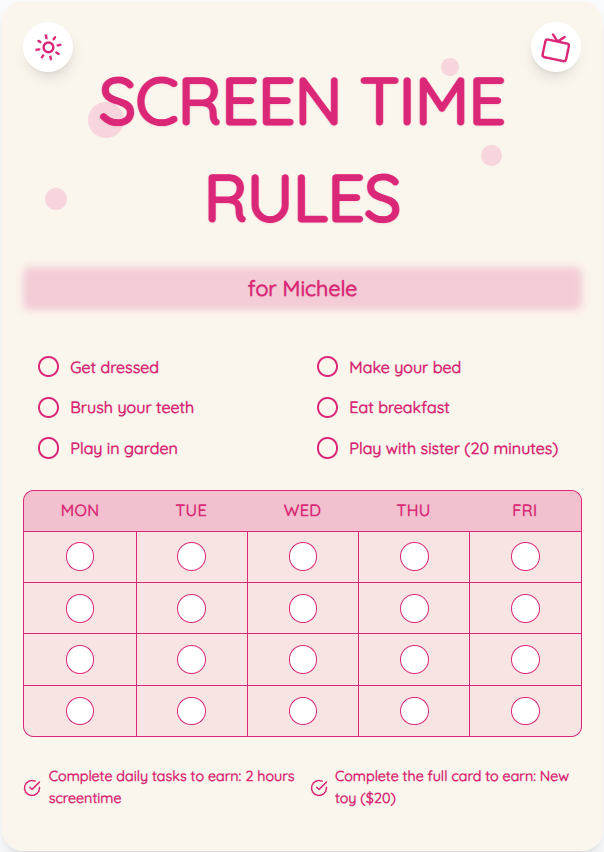How to Set Screen Time Limits on Multiple Devices: A Parent's Guide
In today's digital age, managing screen time limits across multiple devices can be a challenge for parents. Finding the right balance between technology use and other activities is crucial for your child's development and overall well-being. This guide offers practical tips and expert advice to help you navigate the world of screen time management effectively.
See What Your Screen Time Chart Will Look Like
Here's an example of a beautiful, customizable screen time rules chart you can create for your family

Understanding the Importance of Screen Time Limits
Setting screen time limits is essential for promoting healthy behaviors and ensuring that your child engages in a variety of activities beyond screens. Excessive screen time has been linked to sleep disturbances, behavioral issues, and decreased academic performance. By establishing boundaries early on, you can help your child develop healthy screen habits that will benefit them in the long run.
Practical Tips for Managing Screen Time on Multiple Devices
1. Create a screen time schedule that allocates specific time slots for device usage. 2. Use parental control features to set limits and monitor your child's screen time. 3. Encourage non-screen activities such as outdoor play, reading, and hobbies. 4. Implement a 'no screens during meals or before bedtime' rule to promote family interaction and better sleep hygiene.
Put These Tips Into Action
Create a custom chart to implement these strategies with your child
Utilizing Screen Time Charts for Effective Management
Screen time charts are valuable tools for visualizing and tracking your child's device usage. By using a screen time chart generator like ScreenTimeRules.com, you can create customized schedules and limits tailored to your family's needs. These charts can serve as a visual reminder for both parents and children, making it easier to adhere to established screen time boundaries.
Practical Tips for Success
- Set clear and consistent rules around screen time usage.
- Lead by example and demonstrate healthy screen habits yourself.
- Engage in open communication with your child about the importance of balance.
- Encourage physical activity and social interactions to offset screen time.
Frequently Asked Questions
How can I handle screen time battles with my child?
Addressing screen time battles requires patience and consistency. Clearly communicate the rules and consequences, involve your child in setting limits, and offer alternative activities to redirect their focus.
Are there any recommended screen time limits for different age groups?
The American Academy of Pediatrics suggests no more than 1 hour of high-quality screen time for children ages 2-5, and consistent limits for older children based on individual needs and family routines.
Can screen time charts help reduce conflicts in setting limits?
Yes, screen time charts provide a visual representation of expectations and boundaries. They help establish a structured approach to screen time management, reducing conflicts and promoting accountability.
By implementing these practical tips and utilizing tools like screen time charts, you can effectively manage screen time limits on multiple devices while fostering a healthy balance in your child's life. Start creating a screen time plan that works for your family today!
Ready to Transform Your Family's Screen Time?
Join thousands of parents who have successfully managed screen time with our customizable charts.
